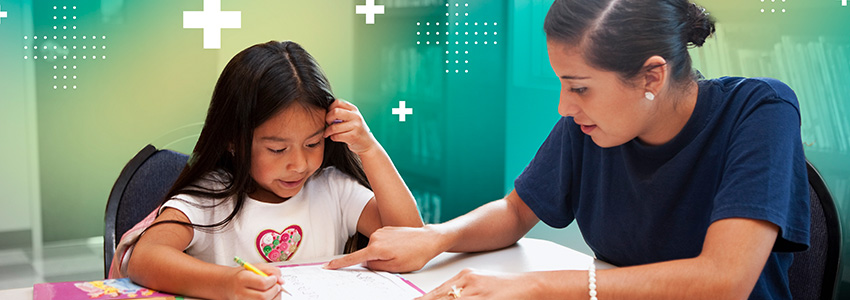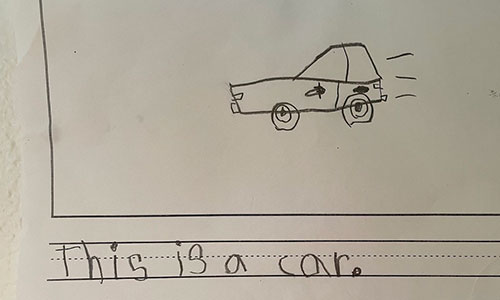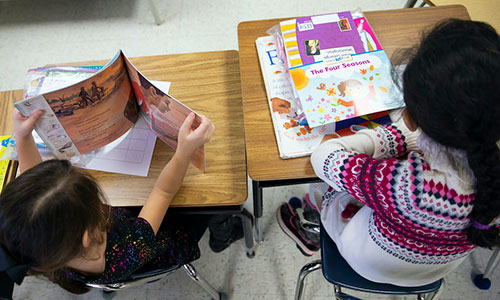
Many of our earliest memories of school are about learning to read. Do you remember what your experience was like? Did you have a fairly smooth journey? Or did your “literacy story” include a lot of struggles along the way?
We know many students (including many adults) have faced major challenges when learning to read. The encouraging news is that teachers can now draw from the science of reading as they are helping students create their own literacy stories. But for school leaders, the science of reading may be just the beginning of an answer. They are often left with many questions and not a lot of support.
“Oftentimes, I feel like leaders have been left out,” says Beth Praska, senior professional learning consultant at NWEA. “Districts only have so much money, so they train the teachers. But leaders also need support.”
The essence of leading
NWEA hosted a webinar, The science of reading for leaders: Helping your teachers shift instructional practice, last year that answered many of the big questions leaders are asking. You’ll find a lot of the main takeaways below, but the whole webinar is absolutely worth watching. I also spent some time chatting with one of the hosts from the webinar, Luke Bell (NWEA’s manager of professional learning content design), as well as Beth. They have both been working directly with school and district leaders and provided a lot of great insights into how leaders can respond to these new challenges.
Let’s take a look at some of the main questions leaders are asking about the science of reading.
- What is the science of reading? We define the science of reading as the converging evidence of what matters and what works in literacy instruction, organized around models that describe how and why. “It’s not about a philosophy, and it’s not about a political perspective,” says Luke. “It’s about the emerging and essential evidence.”
- Where can I learn about the evidence? The What Works Clearinghouse publishes practice guides that not only distill the evidence but also take the crucial next step of offering specific recommendations based on the evidence. They are incredibly helpful, free to download, and a great resource for teachers to use in learning communities.
- What should I be looking for when reviewing instruction based on the science of reading? The simple view of reading is a model used by reading researchers all over the world. It’s a very concise equation stating that reading comprehension (RC) is the product of decoding (D) and language comprehension (LC), or RC = D x LC. All decoding/word recognition (D) instruction based on the science of reading should have an emphasis on sounds within words, a scope and sequence for taught phonics, and an application to connected texts.Language comprehension (LC) instruction should include complex texts for all students, support for students to actively develop language skills, and support for students to learn content knowledge and vocabulary.
- How do I know if it’s working? Part of building a culture of evidence-based practices is creating a culture that embraces data. Many of our partners rely on MAP® Reading Fluency™ to monitor progress in oral reading fluency, phonics and word recognition, and phonological awareness. Why these areas? The science of reading tells us that progress in these content areas matters for getting students to the goal of reading comprehension.
Creating better literacy stories
The shift to the science of reading is challenging work. But, as Luke says, we don’t need to “abandon everything we know about what matters and what works in literacy instruction to bring the science of reading to life.” It’s more about having conversations and changing one problematic instructional practice at a time. A helpful tool for leaders as they look forward is the 5Essentials® framework developed by the University of Chicago. It’s a research-based school improvement system that identifies the five key areas that matter most for school improvement. This is a great tool for helping leaders identify where to focus their literacy efforts:
- Effective Leaders who have a clear vision for literacy and rally others around that vision
- Collaborative Teachers who plan together to implement what works and what matters in literacy instruction
- Involved Families who become engaged through open communication and stories of student success with the science of reading
- Supportive Environment where every teacher has the tools they need to be successful in this shift to the science of reading
- Ambitious Instruction that challenges and inspires students to reach their full potential as fluent readers and successful writers
“There are so many things that the leader has to bring in, like clarity of a vision and a mission,” says Beth. Other initiatives may need to be reconsidered as the science of reading becomes the focus, and leaders must be ready to listen and respond to the real needs of teachers. Remember: The national story about literacy outcomes has been decades in the making. Current fourth-grade reading scores have not changed a lot since 1998. It’ll take some hard work to fully rewrite that story.
Partnering to help all kids learn
That’s our mission here at NWEA, and we’ve seen measurable results many times in our partner districts. MAP Reading Fluency and MAP® Growth™ can be game-changers, connecting precise student data to instructional next steps. And we know teachers thrive when they are supported in learning research-based practices within a connected system of professional learning, coaching, and data consultation. Ultimately, getting students to the goal of reading comprehension is not about just a product or a tool—it’s about the people in your buildings doing the work, every day. That’s why we’ve introduced a two-part addition to our early literacy suite called “Early Word Recognition.” The sessions go far beyond theory and into actionable, day-to-day insights that teachers can use long after they’ve completed the workshop. “Right now we have a lot of new teachers . . . and it’s even more the onus of a leader to support these young teachers, especially in some of our states with teachers who aren’t even fully finished with their degrees yet,” says Beth.
Make sure to download the webinar resources—you’ll find a lesson-planning tool to support teachers in designing and planning phonics lessons and a learning-walk tool leaders can use to identify trends at the classroom, school, or district level.
The bright road ahead
“It is possible to teach the vast majority of students to read if we start early and follow the significant body of research showing which practices are the most effective,” says Luke. “Researchers now estimate that 95% of all children can be taught to read by the end of first grade.” That is a lot of literacy stories with wonderfully happy endings.






